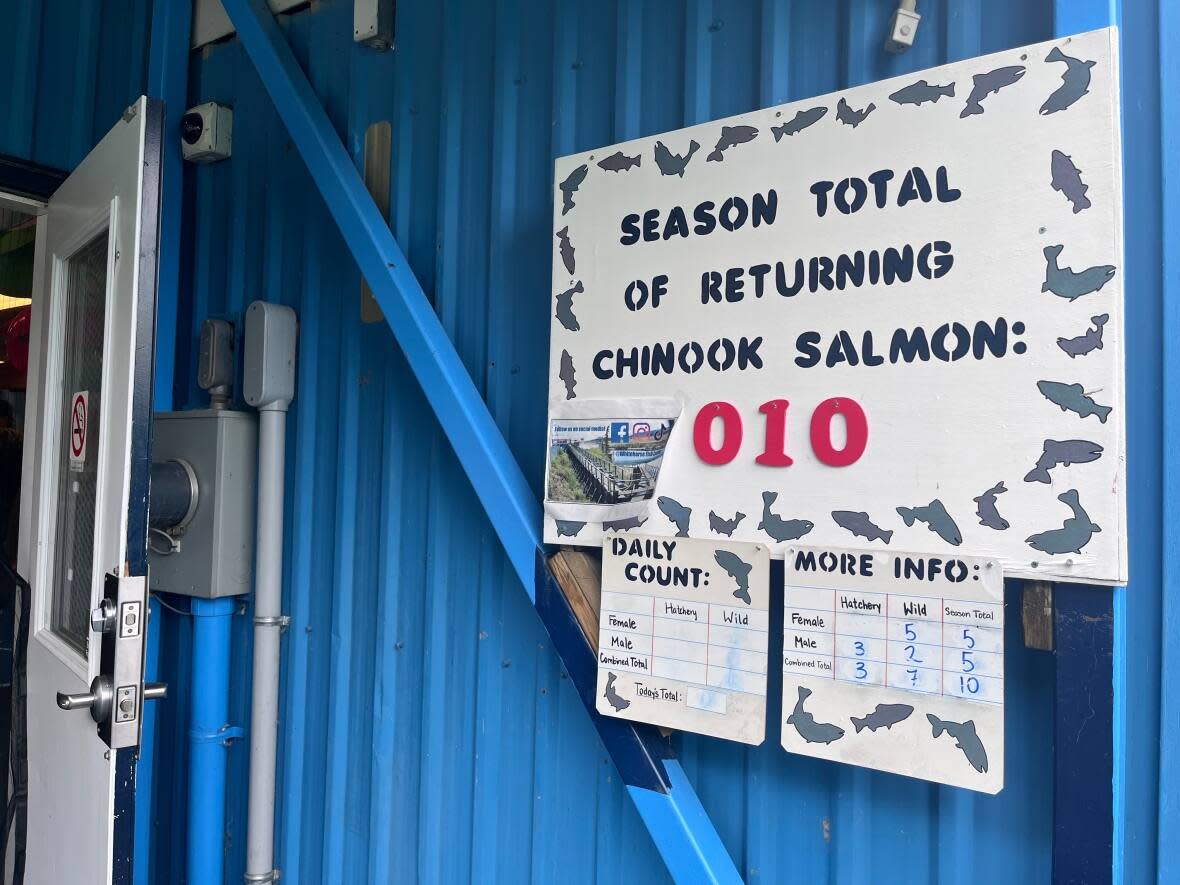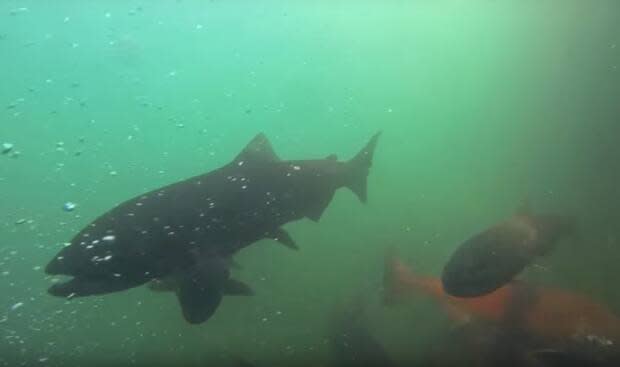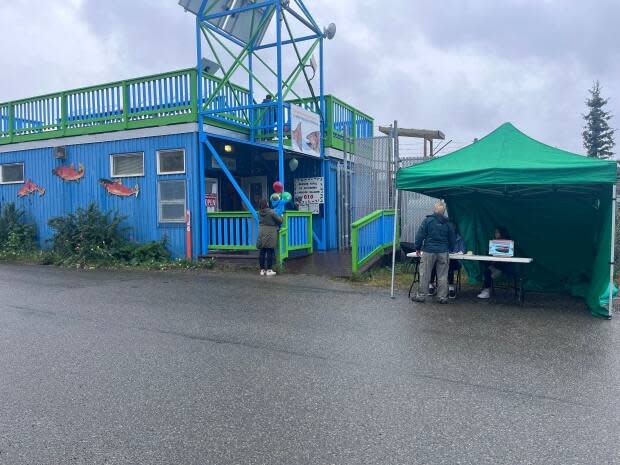Whitehorse fish ladder sees 'heartbreaking' low of just 13 chinook salmon

Dozens gathered at the Whitehorse fish ladder on Wednesday for "salmon appreciation night," but the mood was dampened this year by staggeringly low numbers of chinook salmon.
Only 10 salmon had passed through the fish ladder, which bypasses the Whitehorse Rapids Dam on the Yukon River, said Amy Jacobsen, fish ladder supervisor. By Thursday, the number was up to 13.
Last year, there were 274 salmon, which is lower than the annual average of 1,000, she said.
Numbers typically peak in mid-August, and Jacobsen is hoping for a late push. If numbers stay this low, it could be their worst year on record.
"If there's going to be a silver lining, we have the habitat," she said. "If they come, we have a place for them. And that's our hope."

The Whitehorse fish ladder is the longest wooden fish ladder in the world, and is a popular destination for Yukoners and tourists alike.
The fish have one of the longest migration routes in the world, swimming from the Bering Sea up the Yukon River to reach their spawning grounds.
"Even from the beginning of the Yukon River, back by the Bering Sea and Alaska, their numbers were 90 per cent down from last year," said Jacobsen.
That part of the river usually sees between 100,000 and 500,000 chinook salmon every year. Jacobsen says this year, there were 44,000 chinook counted there.

A cultural loss
Chinook salmon hold deep cultural significance in the territory, particularly among First Nations, who have fished chinook for centuries. In recent years, several First Nations have chosen not to fish to replenish the stock.
Paul Josie is deputy chief of the Vuntut Gwitchin First Nation, which chose not to fish chinook this season. He traveled to Wednesday's event from Old Crow with his young daughters.

"I grew up on the Porcupine River, which connects to the Yukon River," Josie said. "A lot of what I wanted to do today is to bring my girls to the fish ladder to see what salmon are, to learn more about the salmon and the Yukon River."
Choosing not to fish, Josie said, has made it hard to pass on traditional knowledge to his children.
"It's been a part of my culture, my life, my livelihood, and my diet for my whole life," he said.
"It's kind of heartbreaking that I've got to be talking about this, because my little girls are just so young. They've never seen what we've been doing for thousands of years."
Source of decline unclear
Scientists are still trying to understand why the numbers have dropped so dramatically. Travis Ritchie is the manager of environment, assessment and licensing for Yukon Energy, which operates the Whitehorse Rapids Dam.
He called the low numbers "alarming."

Ritchie said his scientific colleagues say there are environmental and human factors that could be keeping the salmon from returning, like warming waters, years of overfishing and habitat loss.
Ritchie said Yukon Energy and local First Nations are part of a new working group looking at the operations of the fish ladder and the hatchery, which is located just downstream, for ways to bring back the numbers.
"It's affecting the spirit of people, what we're seeing in the environment," Ritchie said. "I think there's a contribution to be made by everybody to try and do what we can all together to try and see if we can make some improvement"

 Yahoo Movies
Yahoo Movies 
